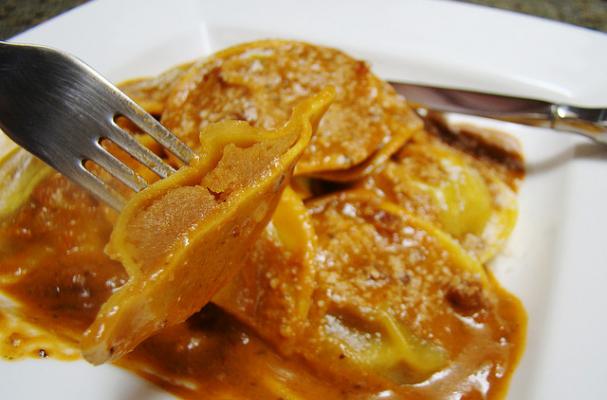
This is one of my favorite fall dishes. The sweet butternut squash pairs perfectly with the nutty butter and pungent sage. Homemade ravioli is a lengthy process but well worth the effort. Nothing compares to freshly made pasta. This is a dish you want to take on when you have plenty of time so that imaking ravioli is relaxing and fun. This is a recipe that you'll definitely want to make this season.
Butternut Squash Ravioli with Browned Butter, Sage, and Pine Nuts
Ingredients:
When you're ready to cook the ravioli, boil a large pot of salted water and drop them in, cooking for just 5 or so minutes (remember, they are fresh so they will cook very quickly!) Meanwhile, melt a hunk of butter in a frying pan, add a handful of whole fresh sage leaves (washed and dried) and some pinenuts and sautee for 1-2 minutes. Using a slotted spoon, transfer the cooked ravioli directly from the pot of boiling water to the frying pan and toss to coat. Sprinkle with sea salt and freshly ground black pepper and top with fresh parmesan.
Image Sources:










